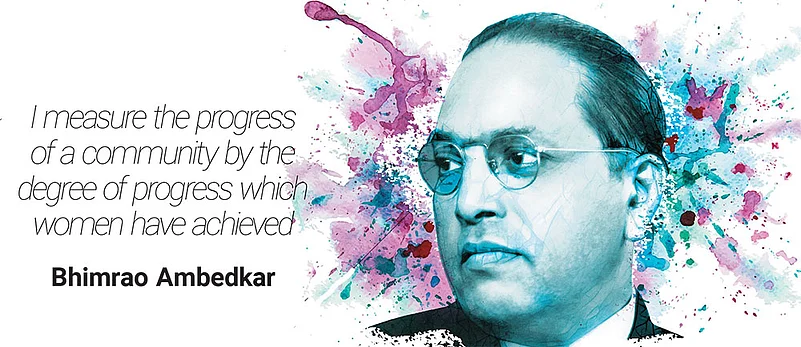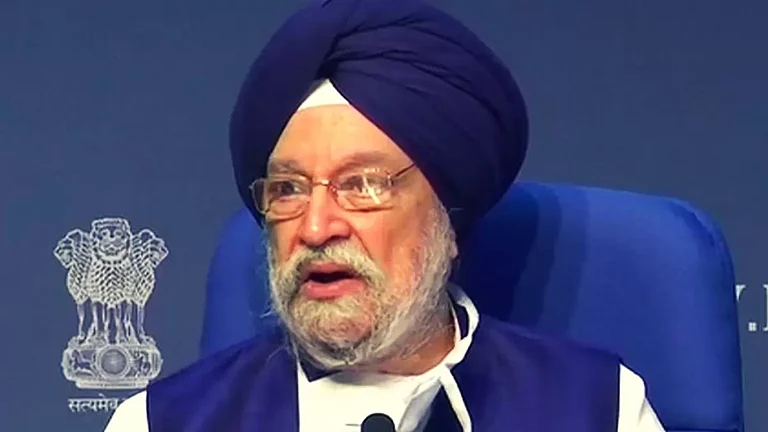In the fast-moving and unpredictable era of digital technology, artificial intelligence, innovative ecosystems and rapidly changing formats of business and economics, the changing role of women and their growth aspirations, creativity, productivity and expectations have found a new voice and direction.
This powerful voice and its determination to be an essential part of India’s growth story gets more credibility given that there are now 1,020 women for every 1,000 men, according to the latest National Family Health Survey data. That is half of the country’s population and 8% of the total global population.
There is, therefore, no way that the Indian economy—or even the world economy—can grow unless we harness the productivity, participation and value of the women in the workforce, business and communities. In all the predictions and aspirations estimated for India’s rise to the third largest economy by 2030, there has been a distinct lack of focus on the potential of women in business and communities by involving them as professionals and entrepreneurs in informal and formal sectors.
This has been the default position for the gross domestic product (GDP) estimates by policymakers, regulators and economists worldwide. The contradiction of high business growth combines with a startling decrease in the participation of women in the workforce, particularly in the post-pandemic era.
Between 2010 and 2020, the number of working women in India dropped from 26% to 19%, according to data compiled by the World Bank. As the care economy shouldered mainly by the women pushed forward, economists have further estimated that female employment may plummet to 9% by 2022.
This downshifting of women’s participation has been a direct result of the growing care economy and its disruption in the lives of many women. This resulted from the pandemic’s onslaught on women’s responsibilities to care for their home, the elderly and children who were not going to regular school, the healthcare burden and mental health issues.
The illusion of inclusion remains persistent. Several data and insights show that nothing much has changed for women, and that their talents are being driven away by short-term-vision companies, organisations and government policymakers. Yet, policymakers cannot see the vital correlation between women in leadership, higher GDP, better economic recovery and sustainable growth.
According to EY’s Diversity in the Boardroom: Progress and the Way Forward report, less than 20% of women are on corporate boards. And only about 30% of women are in C-suite and senior leadership positions.
A vast majority of women remain at entry-level positions in corporate India today. This is despite anecdotal data showing that stocks of companies with low female board representation have underperformed. According to a study by McKinsey & Company, gender-diverse organisations are 15% more likely to have financial returns above their respective national industry medians.
Having women in senior management positions can help companies harness the differentiating leadership styles of empathy, collegiality, compassion, public-spiritedness and collaboration, which have become the hallmarks of sustainable growth in the new era. Yet, most leading companies do not have systematic targets in the pipeline to achieve up to 40% to 50% of women in leadership positions.
A 2010 publication by America’s Bureau of Labor and Statistics found that over 80% of CEOs were men. Globally, 82% of board chairs are men, 78% of board directors are men and 67% of executives are men, and the gender pay gap is still 23%.
The stereotypes of women continue to cascade with unrelenting bias. They do not get promotions and top jobs, and there is a growing disinterest among women in corporate positions, leading to “quiet quitting” in the workplace.
At the same time, the growing role of women in the consumer-and-care economy will have a sharp impact on business and national growth rates, especially with the online and retail sector.
Women have better access to the internet, more disposable income and better education now and are willing to decide on household product purchases. However, the contribution of this “women-led consumer economy” will quickly dissipate without much impact on the GDP until women can hold their jobs and get equal recognition and equal opportunity. They need the inspiration to stay on the fast-track trajectory of career growth rather than drop out from lack of motivation and complete neglect from their companies.
A growing number of investors are seeing the value of hiring women leaders and are systematically trying to mandate more women in decision-making positions. Inclusive and balanced leadership can bring diverse perspectives to the table. It can also help companies better understand customer preferences, ensure greater due diligence and make better decisions. Organisations with more women are likely to oversee board accountability and authority, resulting in stronger corporate governance.
Also, women have emerged as a critical factor in building compliance and commitment to environmental, social and governance (ESG) issues and sustainable growth in India. Be it climate and carbon control, pollution control, bio-organic regeneration or energy recycling, they have a key role as India inches closer to its COP27 targets.

ESG has risen to the top of business, national and global agendas. Long-standing concerns about environmental issues continued to be necessary. However, the “S” in “ESG” came to the fore as the world faced the aftermath of the pandemic and the issues raised by equality movements, inclusion and women’s progress in future trends.
The continuing growth of ESG-focused investing and the increased emphasis that asset managers and institutional investors are placing on ESG issues drive demand for ESG metrics. ESG disclosure will potentially address climate change, workforce diversity, corporate contributions and diversity on corporate boards. There is a growing demand for women to be included as an essential part of the policy initiative and plan for ESG, and their participation will have to be leveraged with intent and structure. India will be no exception to this rule.
The urgency is that if we do not act on gender equality now, the UN Sustainable Development Goals on gender equality will neither be achieved by 2030 nor by 2050 or later. The current measures simply are not sufficient. It is, therefore, high time to not only support but also to walk the talk, so that gender equality can be achieved by all means.
India is standing at the precipice of a spectacular opportunity with its highly experienced IT workforce, many of whom are women engineers and data experts spread across smaller towns and cities. As many as 40% of Indians who graduate in science, technology, engineering and maths (STEM) disciplines are women. Neither are the graduates nor is the country gaining much from it, though.
According to the UN, women constitute merely 14% of the total 2,80,000 scientists, engineers and technologists in research development institutions in India. We will need a dedicated strategy not only for increasing the representation of women in the talent pipeline for STEM jobs, but also for ensuring that they thrive, incentivising them to remain in these high-paying jobs and institutionalising organisational cultures that enable women to advance in these fields.
Not just in STEM, India has a long way to go before it attains gender parity across most fields and industries. According to the World Economic Forum’s Global Gender Gap Report, it will take 257 years to eliminate the prevailing gender gap in the workforce globally. India ranked only 112th in the Global Gender Gap Index in 2020.
The time has come to harness the economic potential of women as consumers, employees, suppliers, producers, investors, workforce and home caregivers without any bias or preconceived notions of their potential. This will hold the key to achieving India’s place in the global economy and policymakers.
Ignoring the vast aspirations of these women and their contributions and their diverse talent pool comes at its own peril and goes against all rationale that businesses espouse, especially as they try to help India attain its trillion-dollar-economy dream.
Indian women are the true invisible heros of India’s growth story. However, they are hardly given a voice at business conferences or appointed to the place of leadership in academia, science and the judiciary. They have marginal participation in Parliament and state legislatures. India’s spectacular GDP rates have not been achieved without their hard work and smart and distinguished contribution. It is time to give the women of India the distinction they deserve.
Poonam Barua, Founder Chairman Forum for Women in Leadership

























